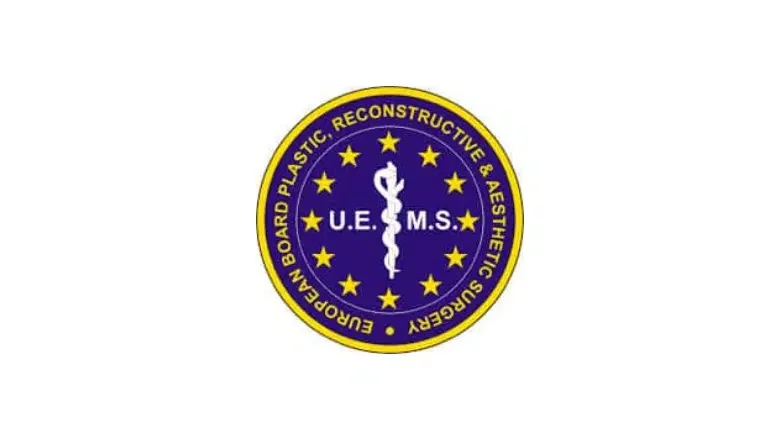Fat transfer surgery has significantly evolved over the last few years with improvements in fat graft survival, which has increased the applications of fat transfer to a wide range of cosmetic surgery procedures. Fat transfer surgery is now commonly combined with a facelift, also known as a ‘lift and fill’ facelift. Breast augmentation is no longer limited to implants as fat transfer can achieve natural-looking results. The Brazilian butt lift (BBL), also known as fat transfer after the buttocks, has revolutionised body contouring surgery with results that surpass those possible with buttock implants. Using your own body fat for amazing body transformations has now become a reality.
RELATED: How long do fat transfer results last for?
Having said that, fat transfer involves a certain degree of unpredictability which is beyond the surgeon’s control. Not all fat that has been successfully transferred to another area will survive. When the fat successfully integrates into the new area, it will behave like fat just like anywhere else in the body, which means it is prone to changes due to weight gain or weight loss and will be affected by the natural ageing process. Fat transfer involves removing fat from an area of the body with excess fat using liposuction. The fat is then processed to remove impurities before being injected into another area such as the buttocks, breasts or face. The fat has to become accustomed to its new environment, and the survival of fat cells can be influenced by several factors. Achieving the best fat transfer results for the long-term means following certain recommendations, as discussed below.
RELATED: Fat transfer breast augmentation pros and cons
It is best to have fat transfer surgery sooner rather than later
As we get older, there are a wide variety of cosmetic treatments that can produce impressive anti-ageing results. However, the results of certain procedures, such as fat transfer, can be determined by how old you are. Achieving the maximum amount of fat cell survival means having this procedure ideally before the age of 50. After this age, fat cell survival can be negatively affected regardless of how fit and healthy you are. There are several reasons why this is the case. When fat is removed from one area of the body and injected into another part, it is important that the very best quality fat is used. When we are younger, fat has a better-developed blood supply that supplies the vital nutrients fat cells need for survival. This rich blood supply diminishes with age which negatively affects fat cell survival.
Younger patients also have better skin elasticity due to higher levels of collagen, which confers skin firmness. When facial fat transfer is performed, the success of the procedure is significantly determined by the quality of the patient’s skin. Long-lasting fat transfer results are achieved with firmer skin, which can better support transferred fat. This does not necessarily mean fat transfer surgery is unsuitable for older people. It may be that fat transfer results may not last for as long, and therefore, it is best advised to have it earlier to get the very best results which you can enjoy for a longer period of time.
RELATED: Facial Fat Transfer vs Fillers
Choosing a specialist plastic surgeon with expertise in fat transfer
The most important priority when you are carrying out your research into fat transfer surgery is the skills and experience of your surgeon. It is important to select a specialist plastic surgeon who regularly performs fat transfer procedures. You are more likely to achieve the best results when surgeons carry out this procedure in high volumes as they will have more experience in all aspects of the procedure, including management of potential complications. A Brazilian butt lift, or BBL, is one of the most popular fat transfer procedures in the UK. The BBL procedure involves harvesting fat from multiple body areas using 360 liposuction. The fat is then injected into targeted buttocks areas using an ultrasound-guided BBL technique. The surgeon’s experience matters as patient safety is the top priority when performing fat transfer to the buttocks.
In most types of fat transfer procedures, it is realistic to expect between 50% and 70% fat survival. This is a normal part of any fat transfer procedure, and your surgeon will account for the loss of fat cells when injecting the fat. Achieving maximum fat survival rates involves knowing exactly how and where to inject the fat cells. After harvesting the fat, it must be properly processed to remove impurities before it can be re-injected. This is why it is extremely important to have state-of-the-art equipment to achieve the highest fat cell survival rates. Single-use equipment is a must with any fat transfer procedure to minimise the risk of cross-contamination and potential wound infection.
Although patients may have preferences for where they would like the fat removed from, the best quality fat is generally found in the abdomen and thighs. A specialist surgeon will always recommend harvest from these areas to achieve high rates of fat cell survival.
Be patient in the fat transfer recovery period
Immediately after any fat transfer procedure, there will be a significant degree of swelling, which is a normal and expected side-effect of fat transfer surgery. The area that has been injected with fat may initially appear bigger than what it eventually will be. Some people may be disappointed by this, particularly with certain surgical procedures such as a Brazilian butt lift or fat transfer breast augmentation. In a small number of cases, your surgeon may recommend minor touchups once you have fully recovered from the procedure to achieve optimal results. When considering a fat transfer, it is important to have realistic expectations about the amount of volume enhancement achievable with fat grafting.
It takes a period of time for your body to adjust to having fat cells transferred to another area of the body. The final results of fat transfer can take approximately three months to become noticeable. In some cases, it can take between six months and one year for final results to develop, particularly for BBL surgery.
RELATED: How to feed fat after BBL?
You can maximise fat cell survival by following your surgeon’s postoperative instructions in full. This means avoiding certain lifestyle habits such as smoking. Smoking has negative effects on fat cell survival. You should avoid overdoing it during the first six weeks after surgery. Strenuous exercise should be avoided for at least six weeks, including going to the gym. Healthy eating habits should be maintained throughout the recovery period and beyond to maintain a high level of fat cell survival.
RELATED: What does fat transfer recovery involve?
Maintain a healthy lifestyle with good nutrition
Fat cells do not increase in numbers but can increase or decrease in size. Significant fluctuations in weight can have negative effects on fat transfer results. Once the fat has become integrated into the new body area, the fat cells will shrink with weight loss and expand with weight gain. The best advice is to maintain a stable and healthy weight with plenty of physical exercises. Minimising stress will help to avoid overeating. Smoking can adversely affect the blood supply to fat cells. A diminished blood supply from smoking will directly affect the quantity of fat that survives. These tips will help you get the most out of your fat transfer procedure. Although any type of fat, including transferred fat, will be affected by the ageing process, maintaining a healthy lifestyle will allow you to enjoy the results of fat transfer surgery for longer.
RELATED: How much does fat transfer breast augmentation cost?
Why choose Centre for Surgery for fat transfer?
Centre for Surgery is the leading cosmetic surgery clinic in London and is home to some of the best fat transfer specialists in the UK. We have many years of experience in all types of fat transfer, including facial fat transfer, fat transfer breast augmentation and Brazilian butt lift surgery. Call us today on 0207 993 4849 to book an in-person consultation at our state-of-the-art Baker Street clinic in Marylebone.










